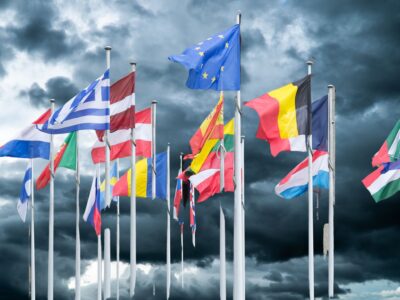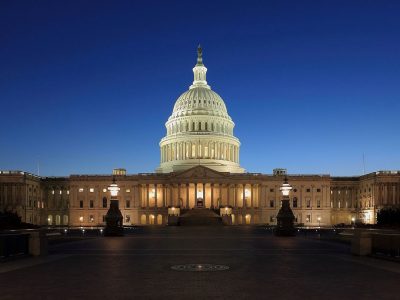While Rome (Moscow) Burns, Pakistan and China Flood, Washington Does Nothing
Grim — almost apocalyptic — headlines seem to greet us daily. Pakistan faces the worst floods in almost a century, displacing millions from their homes and killing thousands. The UN is calling the floods “the greatest humanitarian crisis” the organization has ever faced. Russia swelters in unprecedented heat accompanied by horrific air quality. The average daily death toll is 700 in Moscow and total deaths may climb to 15,000 or even higher. The Russian economy, too, is being battered by the heat and will experience a loss of $15 billion in lower GDP as a result. 1,110 are missing in China as a result of flooding from heavy rains. And of course the east coast has suffered record high temperatures for much of the summer. Yet Washington is doing absolutely nothing on climate change.
Are these extreme weather events related to climate change? The standard disclaimer applies: scientists cannot prove that any individual weather event is caused by climate change. But scientists are also finally willing to make the connection between the frequency and severity of these events and increasing temperatures. Professor Friedrich-Wilhelm Gerstengarbe of the Potsdam Institute for Climate Impact Research, for example, says “we have four such [weather] extremes in the last few weeks. This is very seldom. Global warming is one reason.” And the chief of climate data management at the UN World Meteorological Organization agrees that “it looks like climate change is exacerbating the intensity of the extremes.”
Dan has a great post from earlier this year that explains how to tell whether we’re experiencing extreme but very unlikely events — what we’d call low probability but extreme events that show up on a probability distribution as a “tail risk” — more often. When they happen more extremely and more frequently we say the tail risk is a “fat tail.” I’ll quote him here:
With a normal distribution, after a short intial period, records should be broken infrequently — and when they are broken, it should only be asmall amount. …[With] a fat tailed distribution [records are broken by an enormous margin, and more frequently].
Climate change already seems to be producing a fat tail distribution if this summer’s events, and the 2003 Europen heatwave, are any indication.
Meanwhile, as the globe floods and burns, Washington has abandoned all efforts to pass climate legislation this year. The politics will get worse, not better, after November if predictions are accurate that the Democrats will lose a large number of seats in both houses (and potentially even control of one or both bodies). I keep wondering, do policy makers in Washington lose sleep at night over their inaction in the fact of monumental catastrophe? Do politicians who deny that climate change is occuring reevaluate their positions in the face of thousands dying in floods and extreme heat? What more do they need to be jolted into action?
Reader Comments
5 Replies to “While Rome (Moscow) Burns, Pakistan and China Flood, Washington Does Nothing”
Comments are closed.








Yup the hot weather in Russia etc proves climate change!
.
http://www.metoffice.gov.uk/corporate/pressoffice/2010/pr20100301.html
http://uk.reuters.com/article/idUKPEK161570._CH_.242020080204
http://www.climatelogic.com/forecasts/winter-2010-forecast-europe.html
http://www.csmonitor.com/USA/2010/0105/Cold-weather-winter-is-chilliest-in-many-people-s-memory
http://www.theage.com.au/world/siberian-winds-usher-in-record-lows-in-beijing-20100103-lna6.html
http://www.sott.net/articles/show/205582-Russia-s-top-weatherman-says-winter-in-Siberia-may-be-coldest-on-record
http://www.dw-world.de/dw/article/0,,5427974,00.html
http://www.mongolianviews.com/2010/01/coldest-winter-in-last-thirty-years.html
http://econotwist.wordpress.com/2010/01/10/coldest-january-in-norwegian-history/
http://language.globaltimes.cn/bilingual/201003/515841.html
http://www.bild.de/BILD/news/bild-english/sport-news/football/world-cup-2010-south-africa/06/17/coldest-world-cup-ever/freezing-winter-games-in-south-africa.html
Could one add the huge masses of polar air over temperate zones in North America and Europe in Jan & December, with temperatures plunging to record lows across the political and medial capitals of the world’s most powerful nations. While the temperate zones froze, average temperatures at the pole were 11 degrees above normal.
Where did the energy come from to move that enormous mass of heavy, polar air south? Not sunlight, the pole was wrapped in total darkness.
like i say, the cold, cold winter is just another example of strange weather–very strange weather. Warming poles, polar air in the Fla panhandle, the jet stream looping back on itself west of Greenland, pumping a huge stream of warm air north. Planes flying to Europe would hit that wall of unstable air over the Straights of Labrador and drop like they were driven off a cliff.
Temperature gradients lead to instabilities and instabilities quickly collapse. What kept the jet stream in place that way for weeks? How much heat was the earth pumping north?
All those links in our skeptic’s comment confirm my point–all but the last one. They were playing in the Southern Hemisphere this year, surely farther south than ever before. June is January in South Africa.
Yawn,
All this has happened before, witness the Holocene Maximum, the Roman Warming and the Medieval Warm Period-just to name a few.
And even last century there has been a number of panics, of which we have conveniently forgotten.
http://rogerfromnewzealand.files.wordpress.com/2010/01/washington-post-1922.jpg
http://rogerfromnewzealand.files.wordpress.com/2010/01/1974iceagereport.pdf
Until if and when some proper empirical causation evidence that points to CO2 becomes available I think we should just enjoy the warm weather.
Cheers
Roger
http://www.rogerfromnewzealand.wordpress.com
Doesn’t everyone just love Lonnie Thompson?
(Warning: May not be appropriate material for those who insist they still live in the Holocene. This may not fit your world view.)
http://www.npr.org/templates/story/story.php?storyId=129652700